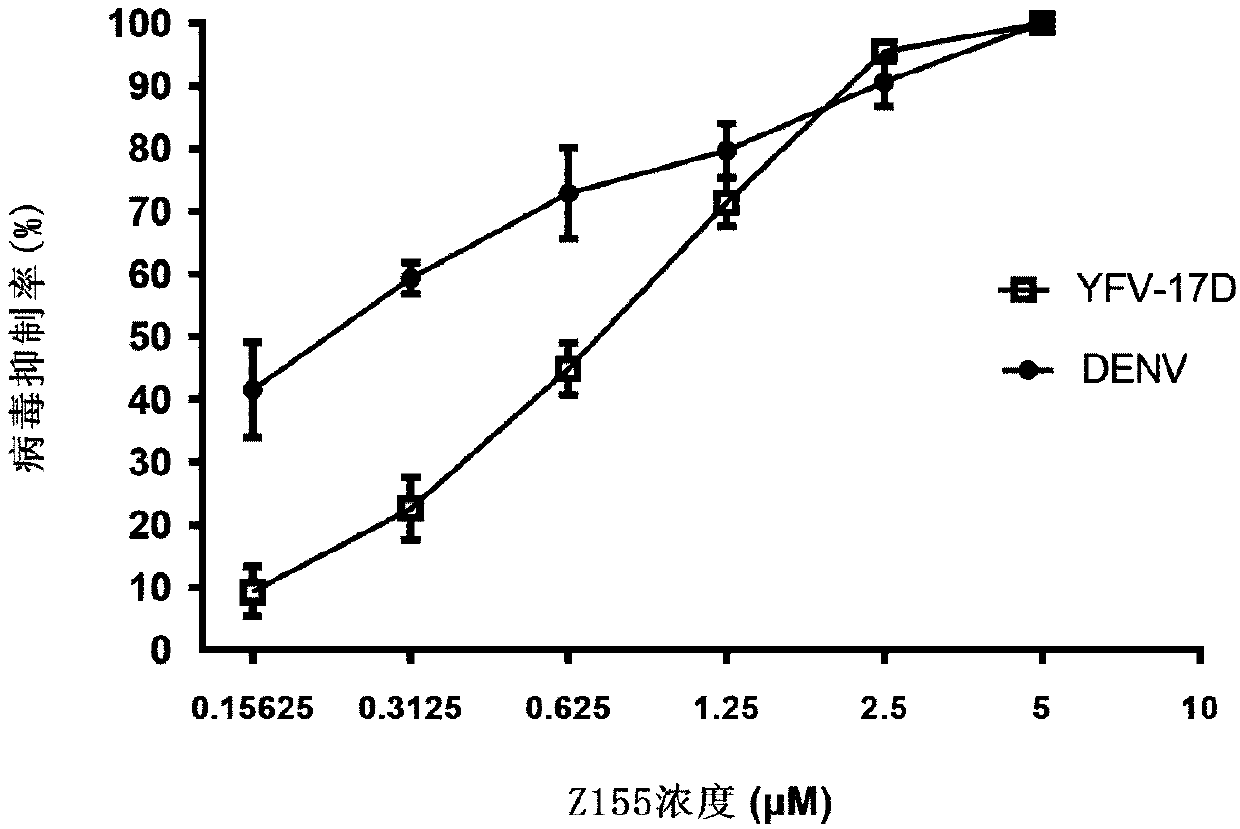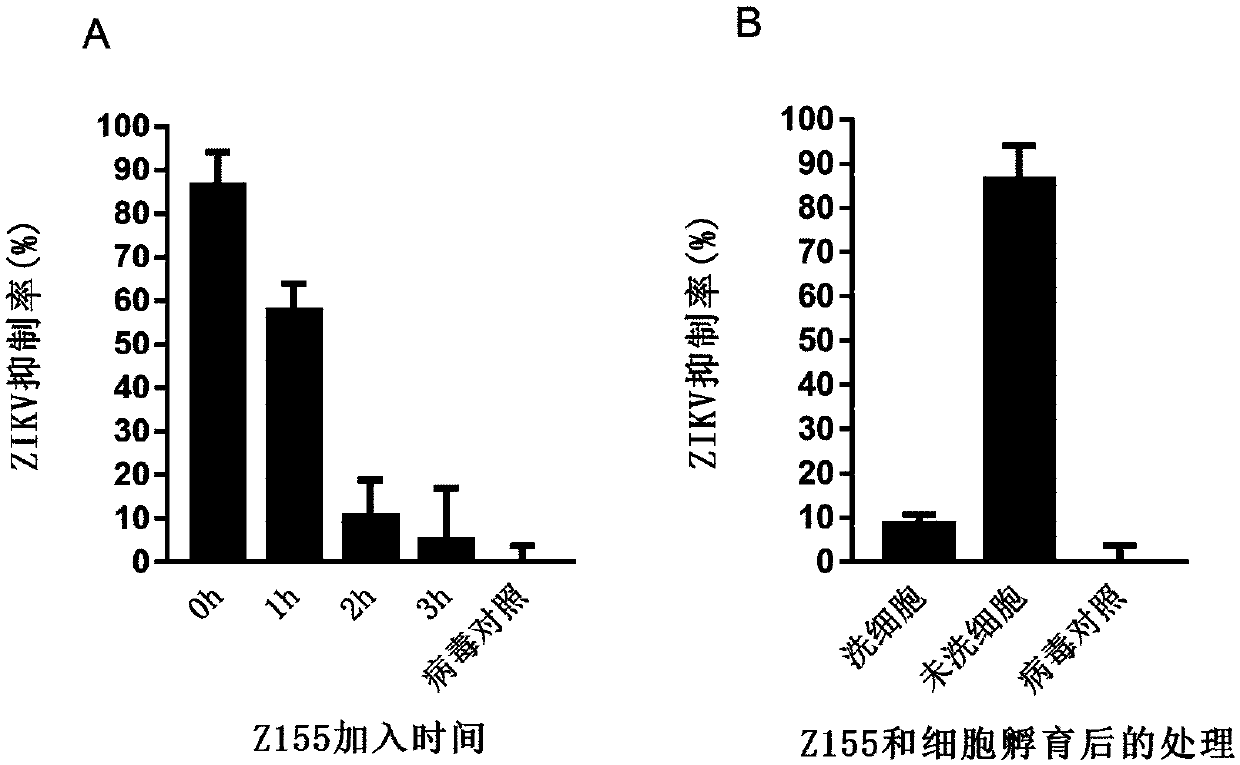Polypeptide capable of inhibiting infection of Zika virus, dengue virus and yellow fevervirus and application of polypeptide
A Zika virus and polypeptide technology, applied in the field of polypeptide virus inhibitors, can solve the problems of loss of infectivity, genome loss, and destruction of virus envelope structure, and achieve good antiviral effect and safety in vivo, broad-spectrum anti-jaundice The effect of viruses
- Summary
- Abstract
- Description
- Claims
- Application Information
AI Technical Summary
Problems solved by technology
Method used
Image
Examples
Embodiment 1
[0039] Embodiment 1 polypeptide drug design
[0040] In this example, multiple polypeptides were designed based on the amino acid sequence of the ZIKV envelope protein (Envelope, E), and were screened by plaque reduction experiments. After screening, a polypeptide with good anti-Zika virus effect was obtained, and the polypeptide was named It is Z155, the amino acid sequence of which is shown in Z155-SEQ1; the sequence is: FSQILIGTLLMWLGL.
Embodiment 2
[0041] Example 2 Virus plaque assay detects the inhibitory activity of polypeptide Z155 on ZIKV infection
[0042] (1) Take well-grown BHK-21 cells and spread them on a 24-well plate, 5×10 cells per well 4 cells, cultured overnight for 16-24 hours;
[0043] (2) Dissolve the polypeptide in DMSO after weighing, measure the OD280 absorbance, and calculate the polypeptide concentration according to the extinction coefficient;
[0044] (3) Using serum-free DMEM starting from an initial concentration of 10 μM, dilute polypeptide Z155 in a 2-fold ratio in EP tubes, with a volume of drug-containing medium in each well of 160 μL, and dilute a total of 6 gradients, each gradient setting 3 duplicate holes. Set random peptide controls;
[0045] (4) Use serum-free DMEM to dilute ZIKV so that the final infection concentration of the virus is 0.25×10 3 For each ml of PFU, add 160 μL of virus dilution solution to each tube in (2) (to ensure that 25-35 plaques are formed in each well), and...
Embodiment 3
[0051] Example 3 Polypeptide Z155 inhibits the stage detection of ZIKV infection
[0052] (1) Spread BHK-21 cells in a 24-well plate, 5×10 per well 4 at 37°C, 5% CO 2 Cultivate under conditions for 12-16h;
[0053] (2) Adding the polypeptide Z155 at different time points, and different treatments after adding the polypeptide:
[0054] 1) Time-of-addition assay: After the virus and cells were incubated for different times (0h, 1h, 2h, 3h), 300μl of polypeptide Z155 was added, and the time points were respectively recorded as 0h, 1h, 2h, 3h post-infection. Record it as the drug well, and set the virus-infected positive control group and the cell well as the negative control at the same time, set 3 replicates for each group, the final concentration of the polypeptide is 5 μM, and the virus amount is 40-50 PFU per well;
[0055] 2) Cell wash assay: Add 300 μl of polypeptide Z155 with a concentration of 5 μM to the cells, incubate at 4°C for 30 minutes, absorb the supernatant, a...
PUM
 Login to View More
Login to View More Abstract
Description
Claims
Application Information
 Login to View More
Login to View More - R&D
- Intellectual Property
- Life Sciences
- Materials
- Tech Scout
- Unparalleled Data Quality
- Higher Quality Content
- 60% Fewer Hallucinations
Browse by: Latest US Patents, China's latest patents, Technical Efficacy Thesaurus, Application Domain, Technology Topic, Popular Technical Reports.
© 2025 PatSnap. All rights reserved.Legal|Privacy policy|Modern Slavery Act Transparency Statement|Sitemap|About US| Contact US: help@patsnap.com



